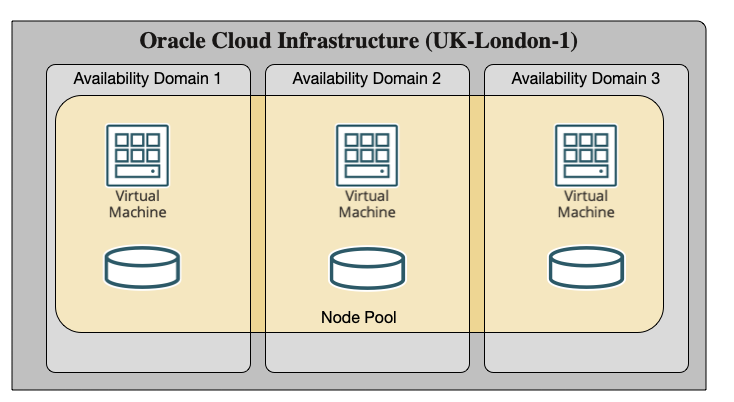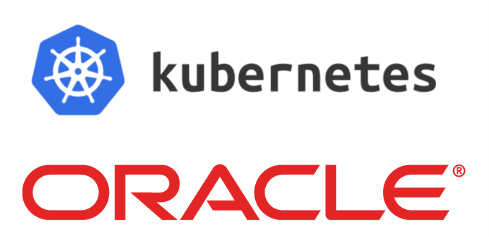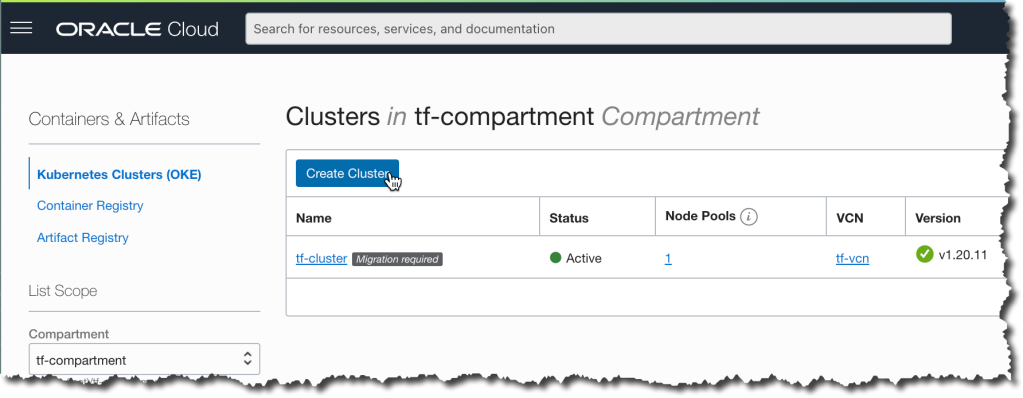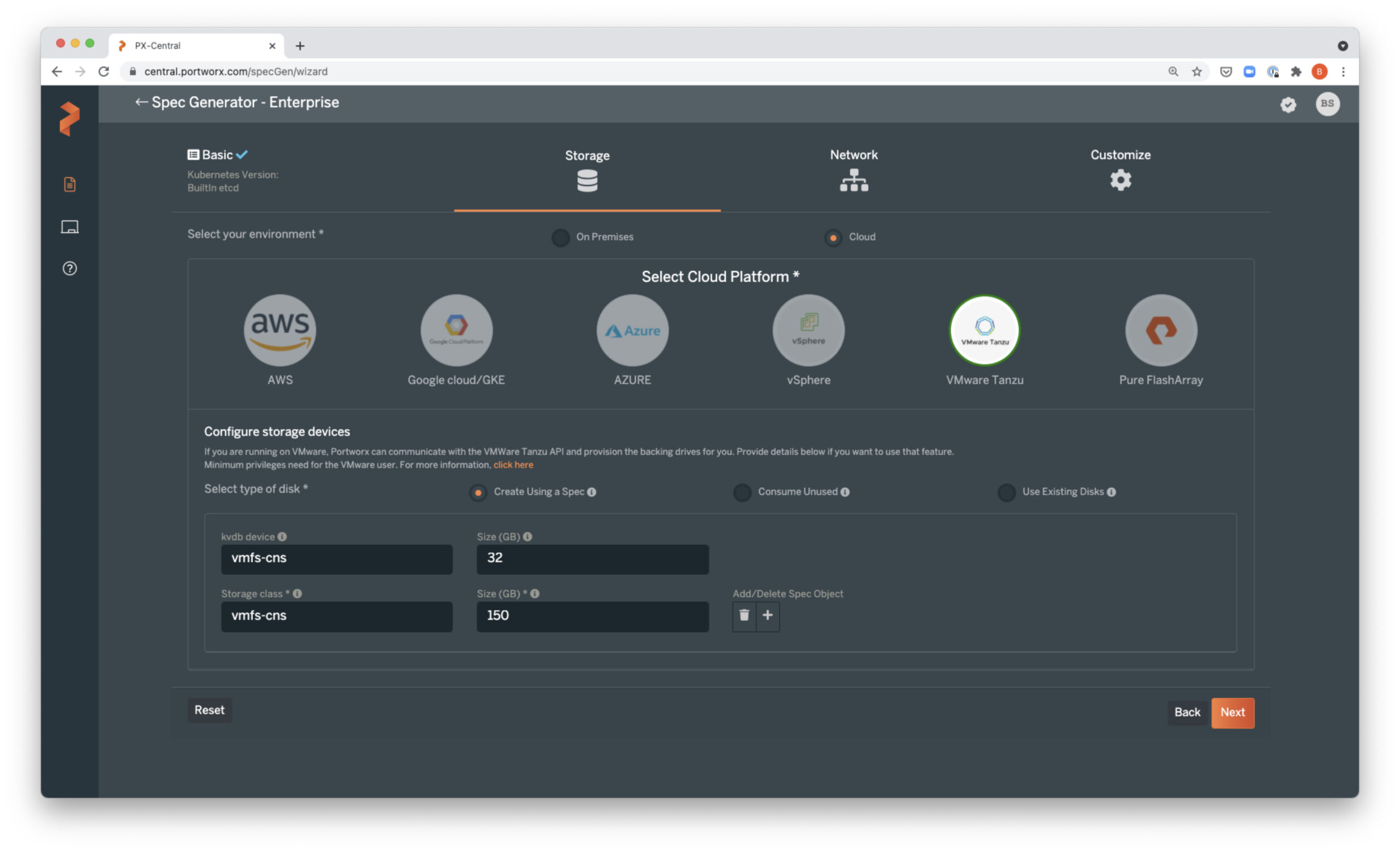
Background
Over the last few years, I have seen increasing interest within the Oracle community in PostgreSQL and now in Yugabyte.
With all the recent excitement about YugabyteDB, I thought I would try and build my own YugabyteDB environment using Oracle Kubernetes Engine(OKE), Portworx storage, and the YugabyteDB Kubernetes Operator.
Check the Kubernetes Environment
Before we install the YugabyteDB Operator, let’s have a quick look at my Oracle Cloud Infrastructure (OCI) Oracle Kubernetes Engine (OKE) environment, which I built using a Terraform script. I have made it available within GitHub.
I am using Kubernetes version 1.20.1. We can check the version with kubectl version. It’s important to note that the client versions need to be within one minor version of the server, so you may need to upgrade/downgrade.
% kubectl version --short | awk -Fv '/Server Version: / {print $3}'
1.20.11
We can check the number of nodes, operating system, and container runtime in the Kubernetes Cluster with kubectl get nodes.
% kubectl get nodes -o wide NAME STATUS ROLES AGE VERSION INTERNAL-IP EXTERNAL-IP OS-IMAGE KERNEL-VERSION CONTAINER-RUNTIME 10.0.1.157 Ready node 11d v1.20.11 10.0.1.157 132.145.33.86 Oracle Linux Server 7.8 4.14.35-1902.306.2.el7uek.x86_64 cri-o://1.20.2 10.0.1.163 Ready node 11d v1.20.11 10.0.1.163 144.21.51.173 Oracle Linux Server 7.8 4.14.35-1902.306.2.el7uek.x86_64 cri-o://1.20.2 10.0.1.205 Ready node 11d v1.20.11 10.0.1.205 132.145.69.16 Oracle Linux Server 7.8 4.14.35-1902.306.2.el7uek.x86_64 cri-o://1.20.2
We can also check the OCI regions and Availability Domains with kubectl get nodes –show-labels:
% kubectl get nodes --show-labels NAME STATUS ROLES AGE VERSION LABELS 10.0.1.157 Ready node 11d v1.20.11 beta.kubernetes.io/arch=amd64,beta.kubernetes.io/instance-type=VM.Standard2.1,beta.kubernetes.io/os=linux,displayName=oke-cgr3bekcbka-n5k6rizv7zq-sbgpx554ada-1,failure-domain.beta.kubernetes.io/region=uk-london-1,failure-domain.beta.kubernetes.io/zone=UK-LONDON-1-AD-3,hostname=oke-cgr3bekcbka-n5k6rizv7zq-sbgpx554ada-1,internal_addr=10.0.1.157,kubernetes.io/arch=amd64,kubernetes.io/hostname=10.0.1.157,kubernetes.io/os=linux,node-role.kubernetes.io/node=,node.info.ds_proxymux_client=true,node.info/compartment.id_prefix=ocid1.compartment.oc1,node.info/compartment.id_suffix=aaaaaaaauktztjuam57uhird7up5gxp32svboo6bmjfxvotkja75tfndc2sq,node.info/compartment.name=tf-compartment,node.info/kubeletVersion=v1.20,oci.oraclecloud.com/fault-domain=FAULT-DOMAIN-2,oke.oraclecloud.com/node.info.private_subnet=false,oke.oraclecloud.com/node.info.private_worker=true,oke.oraclecloud.com/tenant_agent.version=1.38.5-8f5c194266-712,px/enabled=true,px/metadata-node=true 10.0.1.163 Ready node 11d v1.20.11 beta.kubernetes.io/arch=amd64,beta.kubernetes.io/instance-type=VM.Standard2.1,beta.kubernetes.io/os=linux,displayName=oke-cgr3bekcbka-n5k6rizv7zq-sbgpx554ada-0,failure-domain.beta.kubernetes.io/region=uk-london-1,failure-domain.beta.kubernetes.io/zone=UK-LONDON-1-AD-2,hostname=oke-cgr3bekcbka-n5k6rizv7zq-sbgpx554ada-0,internal_addr=10.0.1.163,kubernetes.io/arch=amd64,kubernetes.io/hostname=10.0.1.163,kubernetes.io/os=linux,last-migration-failure=get_kubesvc_failure,node-role.kubernetes.io/node=,node.info.ds_proxymux_client=true,node.info/compartment.id_prefix=ocid1.compartment.oc1,node.info/compartment.id_suffix=aaaaaaaauktztjuam57uhird7up5gxp32svboo6bmjfxvotkja75tfndc2sq,node.info/compartment.name=tf-compartment,node.info/kubeletVersion=v1.20,oci.oraclecloud.com/fault-domain=FAULT-DOMAIN-1,oke.oraclecloud.com/node.info.private_subnet=false,oke.oraclecloud.com/node.info.private_worker=true,oke.oraclecloud.com/tenant_agent.version=1.38.5-8f5c194266-712,px/enabled=true,px/metadata-node=true 10.0.1.205 Ready node 11d v1.20.11 beta.kubernetes.io/arch=amd64,beta.kubernetes.io/instance-type=VM.Standard2.1,beta.kubernetes.io/os=linux,displayName=oke-cgr3bekcbka-n5k6rizv7zq-sbgpx554ada-2,failure-domain.beta.kubernetes.io/region=uk-london-1,failure-domain.beta.kubernetes.io/zone=UK-LONDON-1-AD-1,hostname=oke-cgr3bekcbka-n5k6rizv7zq-sbgpx554ada-2,internal_addr=10.0.1.205,kubernetes.io/arch=amd64,kubernetes.io/hostname=10.0.1.205,kubernetes.io/os=linux,node-role.kubernetes.io/node=,node.info.ds_proxymux_client=true,node.info/compartment.id_prefix=ocid1.compartment.oc1,node.info/compartment.id_suffix=aaaaaaaauktztjuam57uhird7up5gxp32svboo6bmjfxvotkja75tfndc2sq,node.info/compartment.name=tf-compartment,node.info/kubeletVersion=v1.20,oci.oraclecloud.com/fault-domain=FAULT-DOMAIN-3,oke.oraclecloud.com/node.info.private_subnet=false,oke.oraclecloud.com/node.info.private_worker=true,oke.oraclecloud.com/tenant_agent.version=1.38.5-8f5c194266-712,px/enabled=true,px/metadata-node=true
My three-node Kubernetes cluster is spread across three Availability Domains (ADs) located within the UK-London-1 Region, as per the diagram below.

Note: UK-London-region has three Availability Domains (ADs), but some regions are limited to a single AD. Check OCI Region documentation for availability in your region.
I have already installed Portworx into my OKE cluster, so we can check the version using pxctl –version.
% PX_POD=$(kubectl get pods -l name=portworx -n kube-system -o jsonpath='{.items[0].metadata.name}')
kubectl exec $PX_POD -n kube-system -- /opt/pwx/bin/pxctl --version
Defaulting container name to portworx.
Use 'kubectl describe pod/px-cluster-21a6ec62-0ed7-48b8-b6ac-b6833005b533-c6tq6 -n kube-system' to see all of the containers in this pod.
pxctl version 2.8.0.0-1ef62f8
If you are not already using Portworx and want to install the Free Forever Portworx version into your OKE environment, you may want to read this helpful blog post: Portworx Essentials installation on Oracle Kubernetes Engine (OKE).
Create the Storage Class
Let’s start by creating a Portworx Kubernetes Container Storage Interface (CSI) Storage Class. Since I will be using a Yugabyte replication, I will use a Portworx replication of 1.
% cat px-yb-csi-sc.yaml kind: StorageClass apiVersion: storage.k8s.io/v1 metadata: name: px-yb-csi-sc provisioner: pxd.portworx.com parameters: repl: "1" io_profile: "auto" allowVolumeExpansion: True
And I will apply it with kubectl apply.
% kubectl apply -f px-yb-csi-sc.yaml storageclass.storage.k8s.io/px-yb-csi-sc created
We can examine the settings with kubectl describe. For example, from the below information, you can see I have a replication factor of 1 and io_profile of auto.
% kubectl describe sc/px-yb-csi-sc
Name: px-yb-csi-sc
IsDefaultClass: No
Annotations: kubectl.kubernetes.io/last-applied-configuration={"allowVolumeExpansion":true,"apiVersion":"storage.k8s.io/v1","kind":"StorageClass","metadata":{"annotations":{},"name":"px-yb-csi-sc"},"parameters":{"io_profile":"auto","repl":"1"},"provisioner":"pxd.portworx.com"}
Provisioner: pxd.portworx.com
Parameters: io_profile=auto,repl=1
AllowVolumeExpansion: True
MountOptions: <none>
ReclaimPolicy: Delete
VolumeBindingMode: Immediate
Events: <none>
List the StorageClasses (SCs) in the cluster with kubectl get sc. The default StorageClass is marked with (default), for example:
% kubectl get sc NAME PROVISIONER RECLAIMPOLICY VOLUMEBINDINGMODE ALLOWVOLUMEEXPANSION oci (default) oracle.com/oci Delete Immediate false oci-bv blockvolume.csi.oraclecloud.com Delete WaitForFirstConsumer false px-db kubernetes.io/portworx-volume Delete Immediate true px-db-cloud-snapshot kubernetes.io/portworx-volume Delete Immediate true px-db-cloud-snapshot-encrypted kubernetes.io/portworx-volume Delete Immediate true px-db-encrypted kubernetes.io/portworx-volume Delete Immediate true px-db-local-snapshot kubernetes.io/portworx-volume Delete Immediate true px-db-local-snapshot-encrypted kubernetes.io/portworx-volume Delete Immediate true px-replicated kubernetes.io/portworx-volume Delete Immediate true px-replicated-encrypted kubernetes.io/portworx-volume Delete Immediate true px-yb-csi-sc pxd.portworx.com Delete Immediate true stork-snapshot-sc stork-snapshot Delete Immediate true
Install
Now let’s start by cloning the Yugabyte Operator back to our desktop.
% git clone https://github.com/yugabyte/yugabyte-operator.git Cloning into 'yugabyte-operator'... remote: Enumerating objects: 346, done. remote: Counting objects: 100% (346/346), done. remote: Compressing objects: 100% (204/204), done. remote: Total 346 (delta 170), reused 275 (delta 121), pack-reused 0 Receiving objects: 100% (346/346), 284.64 KiB | 1.98 MiB/s, done. Resolving deltas: 100% (170/170), done.
Deploy the YugabyteDB Cluster Operator
Navigate to yugabyte-operator and register the Custom Resource Definition (CRD).
% kubectl create -f deploy/crds/yugabyte.com_ybclusters_crd.yaml customresourcedefinition.apiextensions.k8s.io/ybclusters.yugabyte.com created
Confirm ybclusters.yugabyte.com CRD has been created.
% kubectl get crd/ybclusters.yugabyte.com NAME CREATED AT ybclusters.yugabyte.com 2021-10-21T14:00:25Z
From the same directory, create the YugabyteDB Operator.
% kubectl create -f deploy/operator.yaml namespace/yb-operator created serviceaccount/yugabyte-operator created clusterrole.rbac.authorization.k8s.io/yugabyte-operator created clusterrolebinding.rbac.authorization.k8s.io/yugabyte-operator created deployment.apps/yugabyte-operator created
From the above information, we can see a namespace called yb-operator has been created for us.
Wait a second or two for the Operator to start, and confirm running with the below information.
% kubectl -n yb-operator get po,deployment NAME READY STATUS RESTARTS AGE pod/yugabyte-operator-5dd57b9f8c-w66qr 1/1 Running 0 119s NAME READY UP-TO-DATE AVAILABLE AGE deployment.apps/yugabyte-operator 1/1 1 1 119s
We can now create a YugabyteDB cluster using the Operator.
You can see I have defined three YugabyteDB Master Servers for the management of system metadata and three YugabyteDB Tablet Servers for the data IO.
The Operator also provides a storage section. Here I specified one volume per Master and TServer using count, a size of 1G, and my Portworx StorageClass.
Below is my example manifest:
apiVersion: yugabyte.com/v1alpha1 kind: YBCluster metadata: name: px-ybcluster namespace: yb-operator spec: replicationFactor: 3 domain: cluster.local master: replicas: 3 storage: count: 1 size: 1Gi storageClass: px-yb-csi-sc tserver: replicas: 3 storage: count: 1 size: 1Gi storageClass: px-yb-csi-sc
You can create this with kubectl create -f <filename>, for example.
% kubectl create -f px-yb-cluster.yaml ybcluster.yugabyte.com/px-ybcluster created
Verify that the cluster is up and running with the below command. You should see three pods each for YB-Master and YB-TServer.
% kubectl get po,sts,svc -n yb-operator NAME READY STATUS RESTARTS AGE pod/yb-master-0 1/1 Running 0 8m2s pod/yb-master-1 1/1 Running 0 8m2s pod/yb-master-2 1/1 Running 0 8m2s pod/yb-tserver-0 1/1 Running 0 8m2s pod/yb-tserver-1 1/1 Running 0 8m2s pod/yb-tserver-2 1/1 Running 0 8m2s pod/yugabyte-operator-5dd57b9f8c-w66qr 1/1 Running 0 52m NAME READY AGE statefulset.apps/yb-master 3/3 8m3s statefulset.apps/yb-tserver 3/3 8m3s NAME TYPE CLUSTER-IP EXTERNAL-IP PORT(S) AGE service/yb-master-ui ClusterIP 10.96.18.198 <none> 7000/TCP 8m3s service/yb-masters ClusterIP None <none> 7000/TCP,7100/TCP 8m4s service/yb-tservers ClusterIP None <none> 9100/TCP,9042/TCP,6379/TCP,5433/TCP 8m4s service/yugabyte-operator-metrics ClusterIP 10.96.87.164 <none> 8383/TCP,8686/TCP 51m
We should also now see six Persistent Volume Claims (PVCs) and one volume per Pod in the yb-operator namespace using the Portworx px-yb-csi-sc Storage Class.
% kubectl get pvc -n yb-operator NAME STATUS VOLUME CAPACITY ACCESS MODES STORAGECLASS AGE datadir0-yb-master-0 Bound pvc-e5f2c02e-ca27-4561-aa0e-7fc15f95f34d 1Gi RWO px-yb-csi-sc 2m24s datadir0-yb-master-1 Bound pvc-c7a3c692-11fd-4f95-8d27-6db962aaaf9c 1Gi RWO px-yb-csi-sc 2m24s datadir0-yb-master-2 Bound pvc-87fb6b66-6f88-4658-bda9-ee22c6100ed2 1Gi RWO px-yb-csi-sc 2m24s datadir0-yb-tserver-0 Bound pvc-97bbaf86-7a27-4a5d-988a-22d306127b2f 1Gi RWO px-yb-csi-sc 2m24s datadir0-yb-tserver-1 Bound pvc-7accafb2-e2c1-4636-bb5f-a4d2e2550470 1Gi RWO px-yb-csi-sc 2m24s datadir0-yb-tserver-2 Bound pvc-39ddaeb9-b852-461f-a327-54ce392ee775 1Gi RWO px-yb-csi-sc 2m24s
We can also see the volumes from Portworx using pxctl volume list, for example:
% kubectl exec -it $PX_POD -n kube-system -- /opt/pwx/bin/pxctl volume list Defaulting container name to portworx. Use 'kubectl describe pod/px-cluster-21a6ec62-0ed7-48b8-b6ac-b6833005b533-c6tq6 -n kube-system' to see all of the containers in this pod. ID NAME SIZE HA SHARED ENCRYPTED PROXY-VOLUME IO_PRIORITY STATUS SNAP-ENABLED 828496762191136181 pvc-39ddaeb9-b852-461f-a327-54ce392ee775 1 GiB 1 no no no MEDIUM up - attached on 10.0.1.163 no 925209006038916696 pvc-7accafb2-e2c1-4636-bb5f-a4d2e2550470 1 GiB 1 no no no MEDIUM up - attached on 10.0.1.205 no 231918167691463467 pvc-87fb6b66-6f88-4658-bda9-ee22c6100ed2 1 GiB 1 no no no MEDIUM up - attached on 10.0.1.163 no 965782486596909278 pvc-97bbaf86-7a27-4a5d-988a-22d306127b2f 1 GiB 1 no no no MEDIUM up - attached on 10.0.1.157 no 600324875059410877 pvc-c7a3c692-11fd-4f95-8d27-6db962aaaf9c 1 GiB 1 no no no MEDIUM up - attached on 10.0.1.205 no 852880312411130158 pvc-e5f2c02e-ca27-4561-aa0e-7fc15f95f34d 1 GiB 1 no no no MEDIUM up - attached on 10.0.1.157 no
Let’s check the version using ysqlsh:
% kubectl exec --namespace yb-operator -it yb-tserver-0 -- /home/yugabyte/bin/ysqlsh ysqlsh (11.2-YB-2.7.0.0-b0) Type "help" for help. yugabyte=# select version(); version ------------------------------------------------------------------------------------------------------------ PostgreSQL 11.2-YB-2.7.0.0-b0 on x86_64-pc-linux-gnu, compiled by gcc (Homebrew gcc 5.5.0_4) 5.5.0, 64-bit (1 row) yugabyte=# alter role yugabyte with password 'portworx'; ALTER ROLE yugabyte=# \q
Clean Up
To avoid unnecessary costs we can scale compute nodes down to zero or remove the YugabyteDB cluster using kubectl delete, for example:
% kubectl delete -f px-yb-cluster.yaml ybcluster.yugabyte.com "px-ybcluster" deleted
The yb-master and yb-tserver pods have now terminated:
% kubectl get po -n yb-operator NAME READY STATUS RESTARTS AGE yugabyte-operator-5dd57b9f8c-w66qr 1/1 Running 0 21h
This will not delete the Persistent Volume Claims (PVCs); therefore, the data will persist if you recreate the cluster.
However, if you no longer require the data, delete the PVCs with kubectl delete pvc:
% kubectl get pvc -n yb-operator NAME STATUS VOLUME CAPACITY ACCESS MODES STORAGECLASS AGE datadir0-yb-master-0 Bound pvc-e5f2c02e-ca27-4561-aa0e-7fc15f95f34d 1Gi RWO px-yb-csi-sc 22h datadir0-yb-master-1 Bound pvc-c7a3c692-11fd-4f95-8d27-6db962aaaf9c 1Gi RWO px-yb-csi-sc 22h datadir0-yb-master-2 Bound pvc-87fb6b66-6f88-4658-bda9-ee22c6100ed2 1Gi RWO px-yb-csi-sc 22h datadir0-yb-tserver-0 Bound pvc-97bbaf86-7a27-4a5d-988a-22d306127b2f 1Gi RWO px-yb-csi-sc 22h datadir0-yb-tserver-1 Bound pvc-7accafb2-e2c1-4636-bb5f-a4d2e2550470 1Gi RWO px-yb-csi-sc 22h datadir0-yb-tserver-2 Bound pvc-39ddaeb9-b852-461f-a327-54ce392ee775 1Gi RWO px-yb-csi-sc 22h % kubectl delete pvc -n yb-operator --all persistentvolumeclaim "datadir0-yb-master-0" deleted persistentvolumeclaim "datadir0-yb-master-1" deleted persistentvolumeclaim "datadir0-yb-master-2" deleted persistentvolumeclaim "datadir0-yb-tserver-0" deleted persistentvolumeclaim "datadir0-yb-tserver-1" deleted persistentvolumeclaim "datadir0-yb-tserver-2" deleted % kubectl get pvc -n yb-operator No resources found in yb-operator namespace.
Summary
In this post, I have shared how we can install a YugabyteDB cluster on an Oracle Kubernetes Engine (OKE) cluster and provide persistent Portworx storage to the database cluster.
Share
Subscribe for Updates
About Us
Portworx is the leader in cloud native storage for containers.
Thanks for subscribing!

Ron Ekins
Principal Field Solutions ArchitectExplore Related Content:
- database
- kubernetes
- postgresql






